Introduction
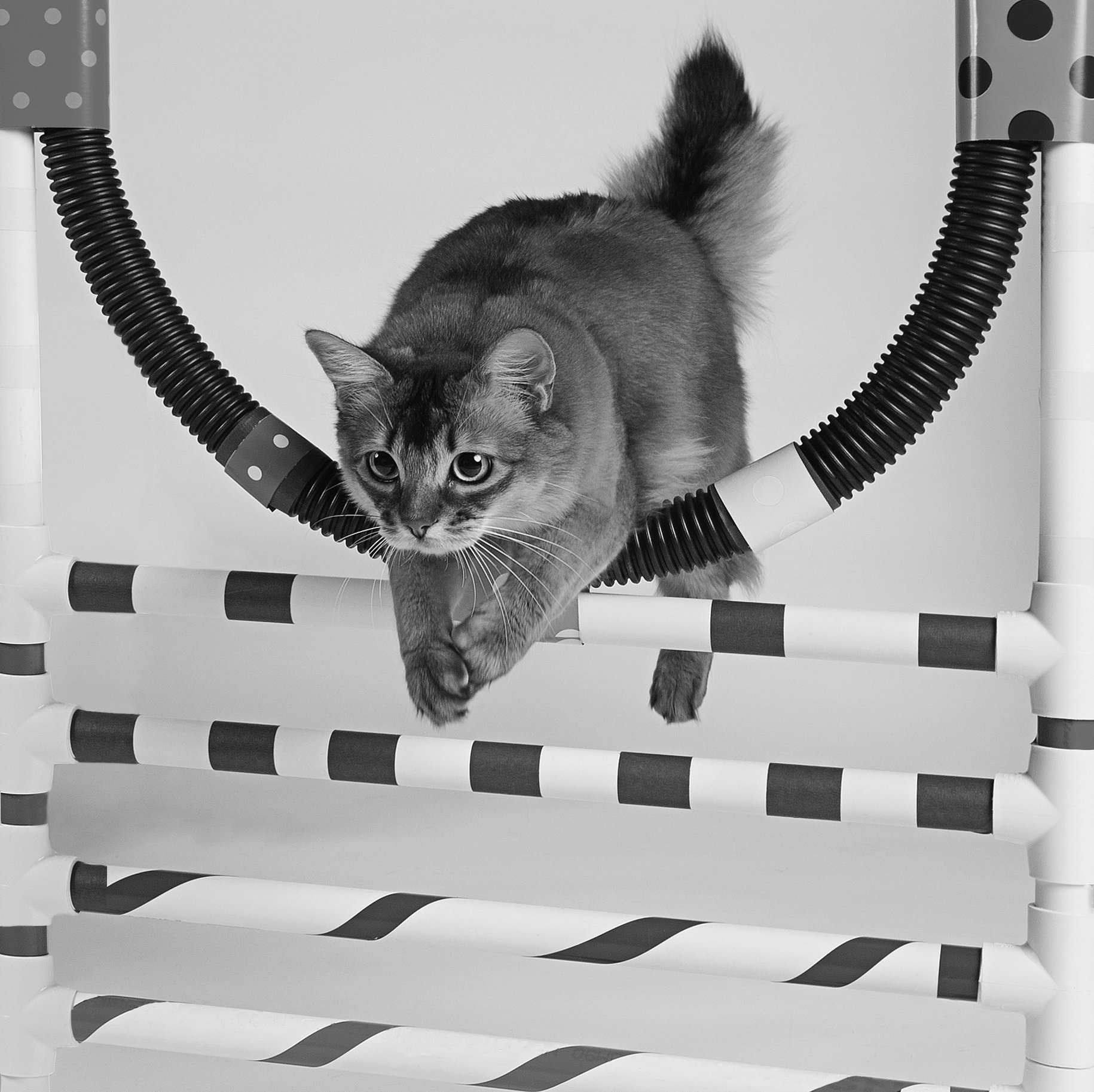
Cat agility training is a popular activity that allows cats to showcase their natural athleticism and intelligence. It involves teaching cats to navigate through a series of obstacles, such as jumps, tunnels, and weave poles. This training can provide numerous benefits for both cats and their owners. It promotes physical exercise, mental stimulation, and strengthens the bond between cat and owner. Cat agility training is not only entertaining to watch, but it also offers a unique way for cats to channel their energy in a positive manner. In this article, we will explore everything you need to know about cat agility training, from getting started to advanced techniques and even competing in agility competitions. Get ready to witness your feline friend's joyful jumps!
Overview of cat agility training

Cat agility training is a fun and stimulating activity that involves teaching cats to navigate through a course of obstacles and perform various jumps. It is a popular sport for cat owners who want to provide mental and physical enrichment for their feline companions. Cat agility courses typically include hurdles, tunnels, weave poles, and platforms. The training focuses on teaching cats to respond to commands, follow cues, and complete the obstacles with accuracy and speed. This form of training promotes coordination, agility, and overall fitness in cats while strengthening the bond between cat and owner.
Benefits of cat agility training

Cat agility training offers a multitude of benefits for both cats and their owners. Firstly, it provides mental stimulation for cats, keeping them engaged, focused, and preventing boredom. It also promotes physical fitness by increasing their strength, agility, and coordination. Moreover, participating in agility training helps cats build confidence and boosts their self-esteem. This is especially beneficial for shy or anxious cats as it helps them overcome fear and gain more confidence in themselves. Additionally, cat agility training fosters a stronger bond between owners and their feline companions, strengthening the trust and communication between them. Overall, cat agility training contributes to the overall well-being and happiness of our feline friends.
Getting Started with Cat Agility Training
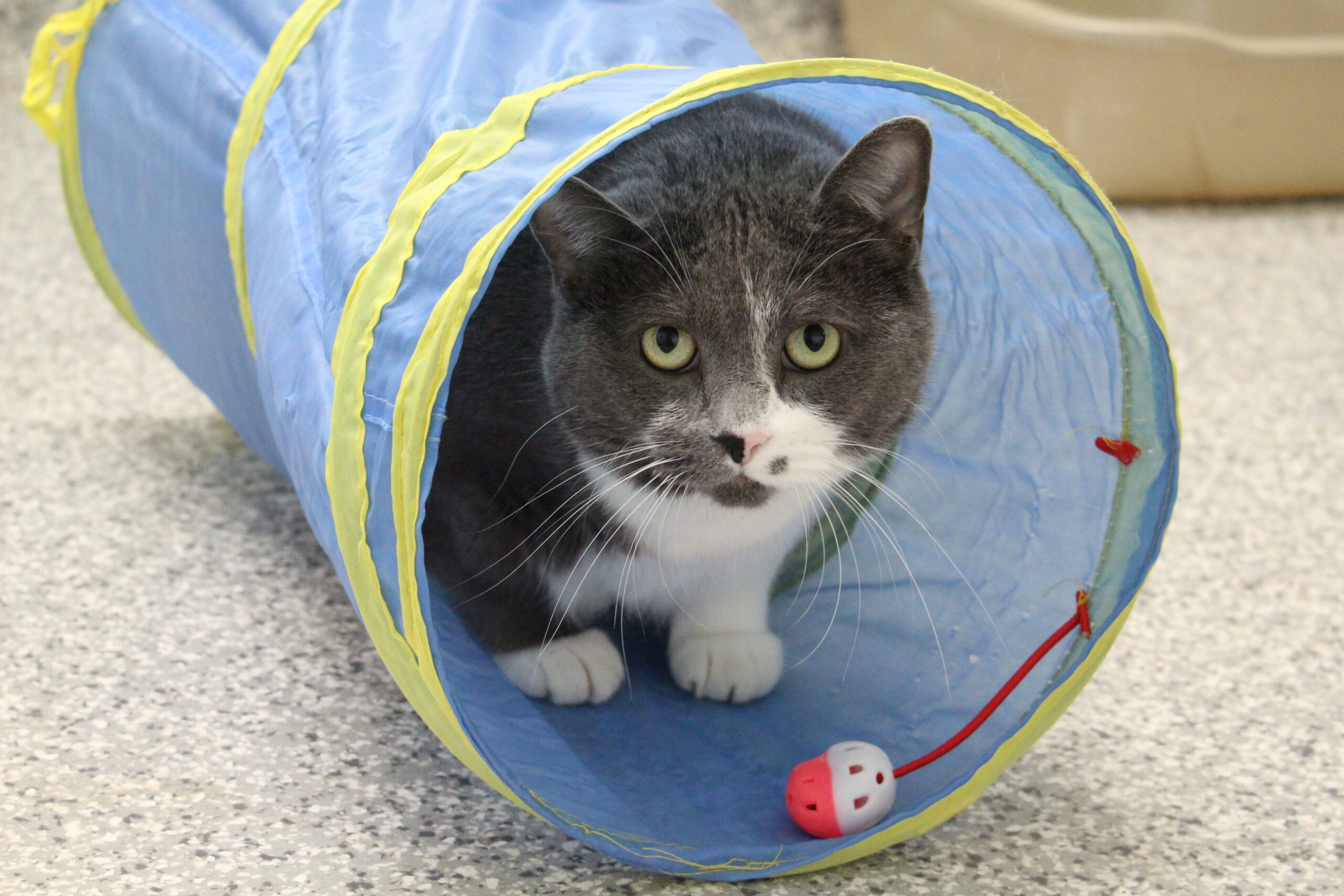
To begin your journey into cat agility training, it's important to have the right equipment and prepare a suitable training area. Firstly, choose the right equipment such as tunnels, jumps, and weave poles that are specifically designed for cats. Make sure they are safe and sturdy for your furry friend. Secondly, prepare a designated space in your home or backyard where you can set up the equipment. Remove any potential hazards and create a safe environment for your cat to explore and exercise. By setting up properly and creating a safe space, you'll be ready to start teaching your cat the basic skills of agility training.
Choosing the right equipment for cat agility training

Choosing the right equipment for cat agility training is crucial to ensure a safe and effective training experience for your feline friend. One essential piece of equipment is agility jumps, which can be adjustable or fixed depending on your cat's skill level. Adjustable jumps allow you to gradually increase the height as your cat progresses. Another important equipment is tunnels, which provide an exciting challenge for your cat's navigation skills. It is also essential to have sturdy and non-slip surfaces for jumps and contact obstacles, like ramps and bridges. Additionally, invest in a harness or agility vest to keep your cat comfortable and secure during training sessions. Remember, choosing high-quality equipment will contribute to the success of your cat's agility training journey.
Preparing the training area
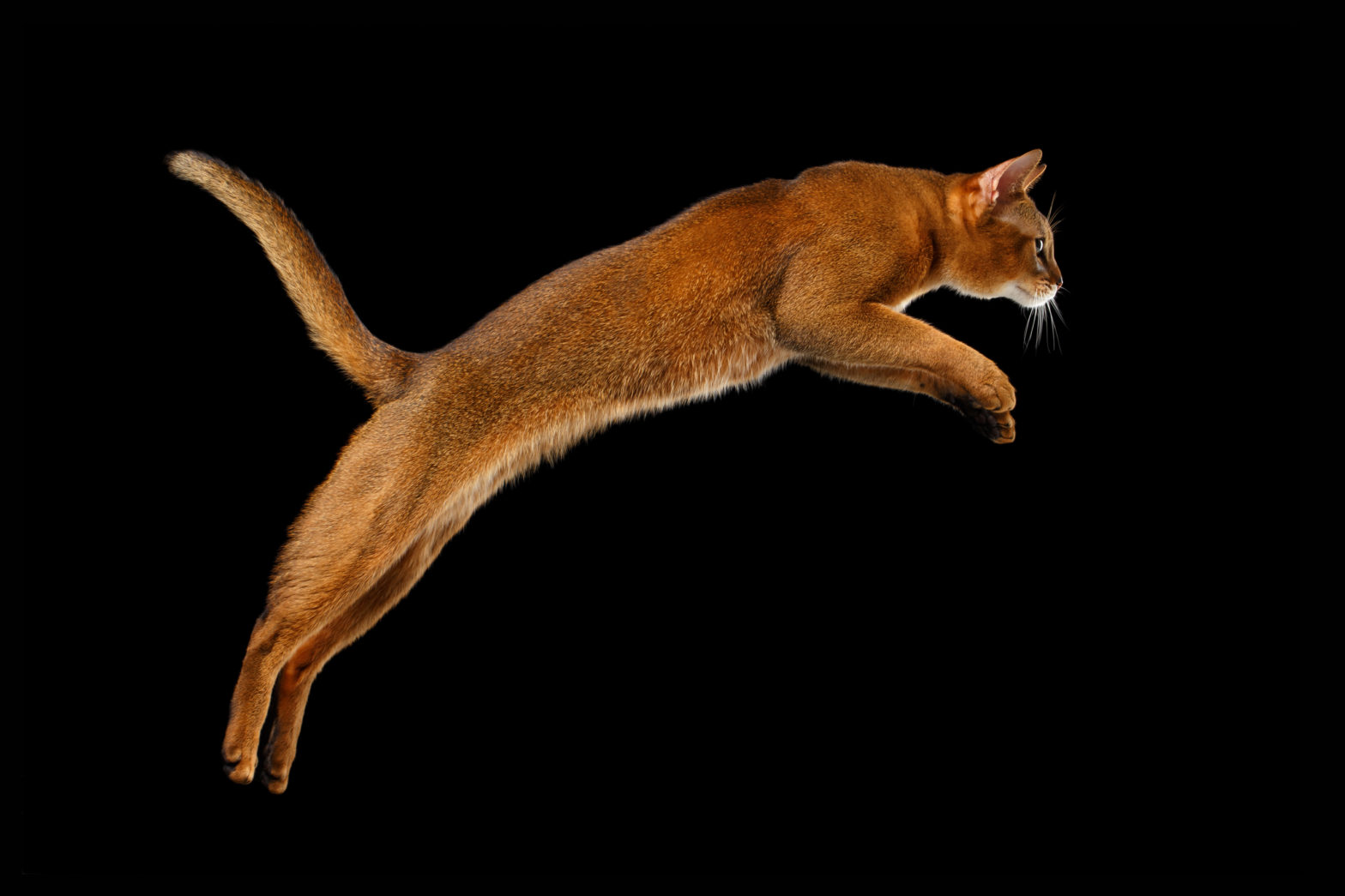
Preparing the training area for cat agility training is essential to ensure a safe and effective experience for both you and your furry friend. Start by choosing a suitable space, preferably indoors or in a secure outdoor area, free from potential hazards. Clear the area of any obstacles or objects that might obstruct your cat's movement. It's important to create an enclosed environment using walls, fences, or barriers to prevent your cat from wandering off during training. Additionally, make sure the surface of the area is comfortable for your cat's paws, such as using padded mats or carpeting. Providing a dedicated and well-prepared training area will contribute to successful cat agility training sessions.
Basic Skills for Cat Agility Training
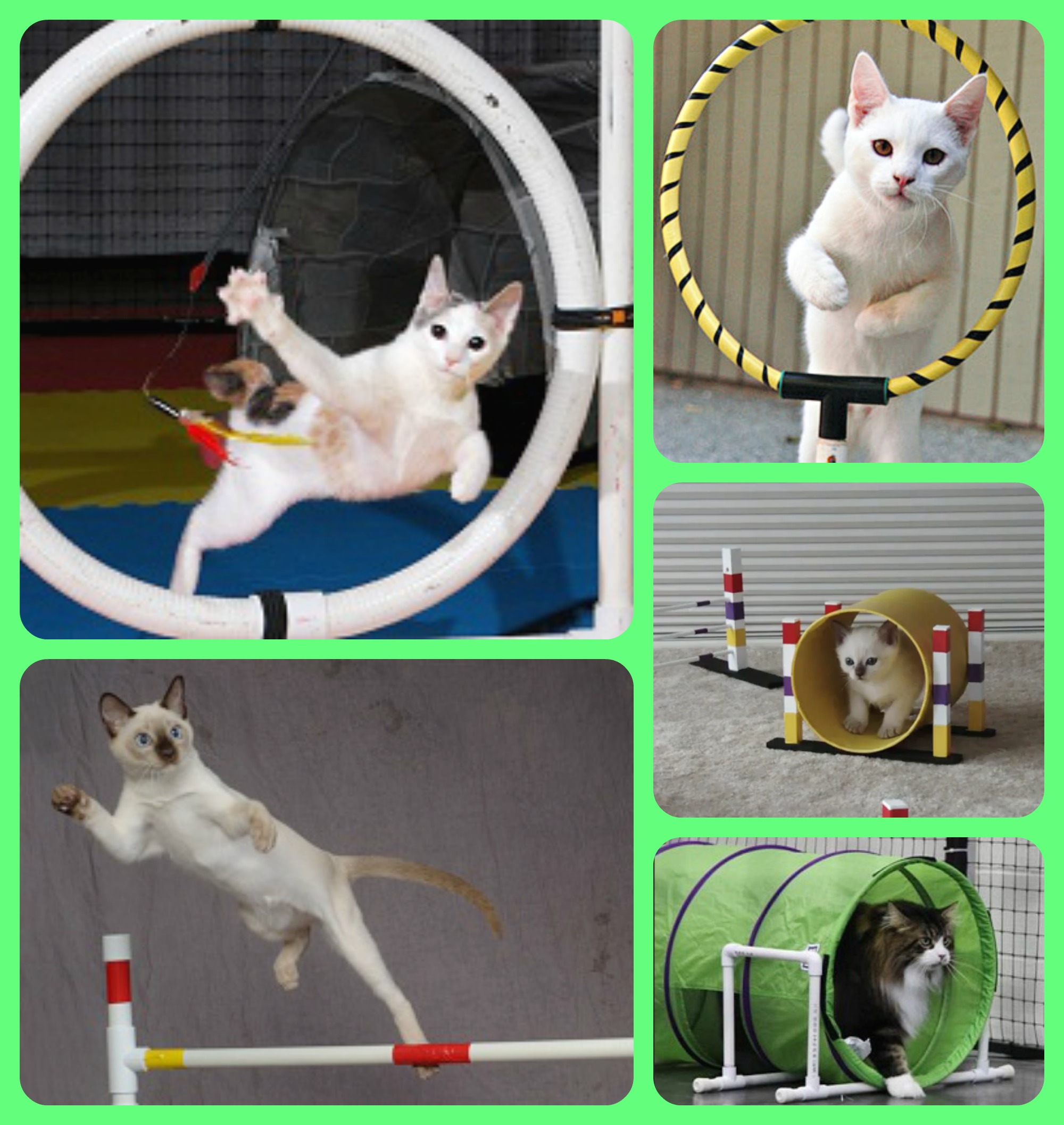
Teaching your cat the basic skills needed for agility training is essential before progressing to more advanced techniques. The first step is to establish clear communication between you and your cat. Start by teaching your cat to respond to simple commands such as "sit" and "stay." Use positive reinforcement, such as treats or praise, to reward your cat for following commands correctly.
Once your cat has mastered basic obedience, it's time to introduce them to the agility obstacles. Begin with basic jumps that are low and easily accessible. Encourage your cat to jump over the obstacle using a target or a toy as motivation. Consistency and patience are key during this stage of training.
As your cat becomes more comfortable with jumping, gradually increase the difficulty by raising the height of the jumps. Remember to keep sessions short and fun, always ending on a positive note. With practice and perseverance, your cat will soon be ready for more advanced techniques in agility training.
Teaching your cat to respond to commands

Teaching your cat to respond to commands is an essential skill for cat agility training. It allows you to guide your cat through the course and ensure their safety. Start by using simple commands like "sit" or "stay" and rewarding your cat with treats and praise when they follow the command correctly. Be patient and consistent in your training sessions, using a calm and positive tone. Repetition is key when it comes to teaching cats, so practice these commands regularly until your cat responds reliably. Rewarding them for their efforts will encourage them to continue learning and performing well in agility training.
Introducing obstacles and basic jumps

Once your cat has mastered responding to commands, it's time to introduce obstacles and basic jumps into their agility training routine. Start by setting up a simple course in your training area. Place objects such as small hurdles or low platforms that your cat can easily jump over. Encourage your cat to approach the obstacles and give them verbal cues to jump. Use treats and positive reinforcement to reward their efforts. Gradually increase the difficulty level by raising the height of the jumps or adding more obstacles. Remember, patience is key as your cat learns to navigate these new challenges.
Advanced Techniques for Cat Agility Training

After mastering the basic skills of cat agility training, you can begin to introduce more advanced techniques to challenge your furry friend. One technique is to increase the difficulty level of jumps and obstacles by raising the height or widening the gap between them. This helps to enhance your cat's jumping and coordination abilities. Additionally, you can teach your cat to navigate through tunnels, which adds an exciting element to their training routine. By gradually introducing these advanced techniques, you can continue to stimulate your cat's physical and mental agility, helping them become a truly agile and skilled feline athlete.
Increasing the difficulty level of jumps and obstacles

Once your cat has mastered the basic jumps and obstacles in agility training, it's time to increase the difficulty level to challenge them further. This can be achieved by gradually raising the height of the jumps or adding additional hurdles for them to navigate. You can also introduce more complex obstacles such as tunnels with turns or weave poles that require your cat to pass through them in a specific order. By progressively increasing the difficulty, you will keep your cat engaged and continue to stimulate their physical and mental capabilities, helping them reach their full potential in agility training.
Teaching your cat to navigate through tunnels
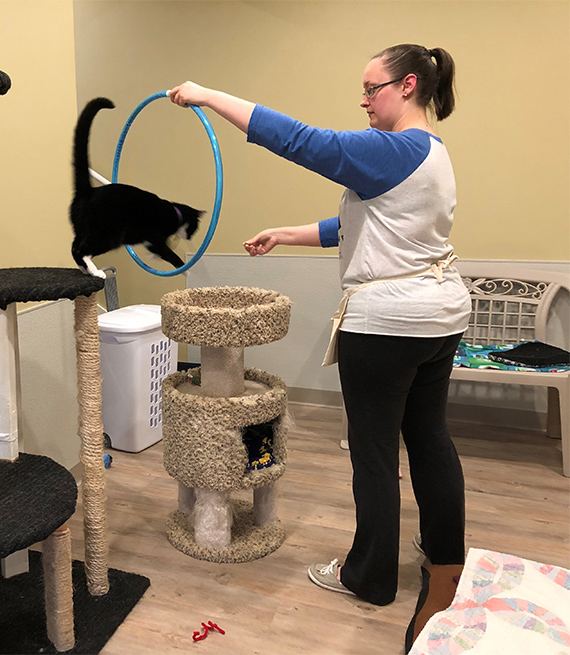
Teaching your cat to navigate through tunnels can be a fun and challenging aspect of cat agility training. Start by introducing your cat to a small, open-ended tunnel and encouraging them to explore it. Use treats or toys to lure them through the tunnel, gradually increasing the distance they have to travel. Make sure the tunnel is secure and stable, so your cat feels safe while maneuvering through it. Practice regularly to help your cat become comfortable with the tunnel and build their confidence. With patience and positive reinforcement, your cat will soon be zooming through tunnels like a pro!
Cat Agility Competitions

Cat Agility Competitions offer a thrilling and competitive platform for cat owners to showcase their feline friends' agility and jumps. These events provide an opportunity for cat owners to demonstrate the training and skills they have developed with their cats. In these competitions, cats navigate through a series of obstacles, including jumps, tunnels, hoops, and weave poles, in the quickest time possible. Judges evaluate both speed and accuracy in completing the course. These events create a fun and exciting atmosphere where cat owners can connect with other enthusiasts and share experiences. Participating in cat agility competitions can be a great way to bond with your cat while showcasing their incredible agility abilities.
Overview of cat agility competitions
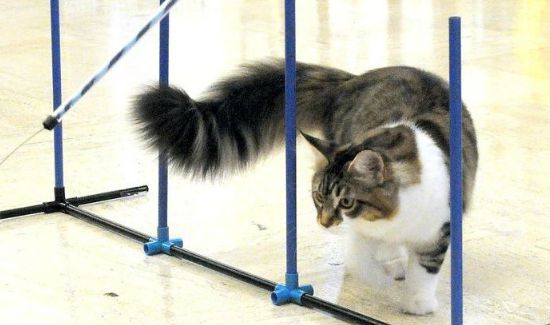
Cat agility competitions are a thrilling showcase of feline athleticism and obedience. These events bring together cat owners and their agile companions to compete in various agility courses. The competitions consist of a series of timed challenges where cats must navigate through tunnels, jump over obstacles, and traverse balance beams. Judges evaluate the cats based on their speed, accuracy, and overall performance. The goal is to complete the course with precision and finesse. These competitions provide a platform for cat owners to showcase their cats' abilities while also fostering camaraderie among cat enthusiasts. It's an exciting event that celebrates the unique talents and skills of our furry friends.
Tips for preparing your cat for competitions
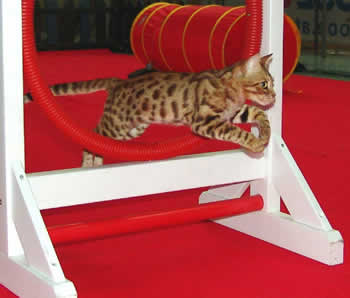
When preparing your cat for competitions, it's important to start with proper training and conditioning. Firstly, make sure your cat is comfortable with all the obstacles commonly seen in competitions such as jumps, tunnels, and weave poles. Practice regularly and gradually increase the difficulty level to challenge your cat. Secondly, acclimate your cat to the competition environment by exposing them to new sights and sounds. This can be done by attending practice sessions or mock competitions. Lastly, ensure that your cat is in good physical health by providing a balanced diet and regular veterinary check-ups. With proper preparation, your cat will be ready to show off their agility skills in competitions.
Training Tips for Success

When it comes to cat agility training, there are some key tips to keep in mind for a successful experience. Firstly, positive reinforcement is essential. Use treats, praise, and affection to reward your cat for completing jumps and obstacles correctly.
Additionally, consistency is key. Set aside regular training sessions to build on your cat's skills and reinforce their training. Make sure to keep the training sessions short and engaging to hold your cat's attention.
Another important aspect is building a strong bond with your cat through training. Spend quality time with them during training sessions, offering encouragement and support.
Lastly, be patient with your furry friend. Cats might have their own pace when it comes to learning new tricks and skills. Don't rush them or become frustrated if progress is slower than expected.
By following these tips, you can enhance the success of your cat's agility training journey and strengthen the bond between you and your feline companion.
Positive reinforcement techniques for cat agility training

Positive reinforcement is a crucial aspect of cat agility training. By using positive reinforcement techniques, such as rewards and praise, you can motivate your cat to excel in their agility skills. When your cat successfully completes an obstacle or performs a jump, reward them with a treat or a favorite toy. This positive association will encourage them to repeat the behavior. Additionally, verbal praise and gentle petting can reinforce good behavior during training sessions. Remember to be consistent and patient with your cat, as positive reinforcement takes time and consistency to yield successful results.
Building a strong bond with your cat through training

Building a strong bond with your cat through training is not only beneficial for their physical and mental stimulation, but it also deepens the connection between you and your feline friend. As you engage in agility training together, you create a positive and trusting relationship built on communication and teamwork. The shared experience of learning new skills and overcoming challenges helps to strengthen the bond between you and your cat. Through consistent training sessions, you both develop a better understanding of each other's cues and behaviors, fostering a sense of mutual respect and companionship. This bond will extend beyond the training area, creating a harmonious relationship in all aspects of your cat's life.
Common Challenges in Cat Agility Training

One of the common challenges in cat agility training is dealing with fear or hesitation. Some cats may initially be afraid of the obstacles or jumps and may hesitate to participate. In such cases, it is important to introduce the training gradually and make sure the cat feels comfortable in its surroundings. Another challenge could be addressing behavioral issues during training. Cats can exhibit stubbornness or distraction, which can make it difficult to maintain focus and obedience during the training session. Patience, consistency, and positive reinforcement techniques are key in overcoming these challenges and ensuring successful cat agility training.
Dealing with fear or hesitation

When it comes to cat agility training, some cats may experience fear or hesitation when faced with new obstacles or jumps. It's important to approach these challenges with patience and understanding. One effective way to help your cat overcome fear is through gradual exposure. Start by introducing the obstacle at a distance and gradually decrease the distance over time. Offer treats and praise as rewards for each successful attempt, reinforcing positive associations. It's also crucial to create a safe and secure training environment to alleviate any anxiety your cat may feel. With consistent practice and encouragement, your cat can conquer their fears and become a confident agility athlete.
Addressing behavioral issues during training

Addressing behavioral issues during training can be a common challenge when it comes to cat agility training. It's important to remember that each cat is unique and may have their own set of behaviors that need to be addressed. Some common behavioral issues during training include fear or hesitation, distractions, or stubbornness.
To address these issues, patience and consistency are key. It's important to create a positive and encouraging environment for your cat. Using rewards and positive reinforcement can help motivate your cat and reinforce desired behaviors. Additionally, breaking down the training into smaller steps can help your cat gradually overcome any fears or hesitations they may have.
If distractions are a problem, try to minimize them as much as possible during the training session. Find a quiet and calm area where your cat can focus without any interruptions. Gradually introduce distractions once your cat has mastered the basics.
For stubborn cats, avoid using force or punishment as this can create a negative association with training. Instead, find creative ways to engage your cat and make the training enjoyable for them. Use toys or treats to encourage their participation and gradually increase the difficulty level as they progress.
Remember, each cat learns at their own pace, so be patient with them. Seek guidance from a professional trainer if necessary, who can provide expert advice on addressing specific behavioral issues during training. With time, consistency, and positive reinforcement, you can overcome any behavioral challenges and make the most of your cat's potential in agility training.
Cat Agility Training FAQs
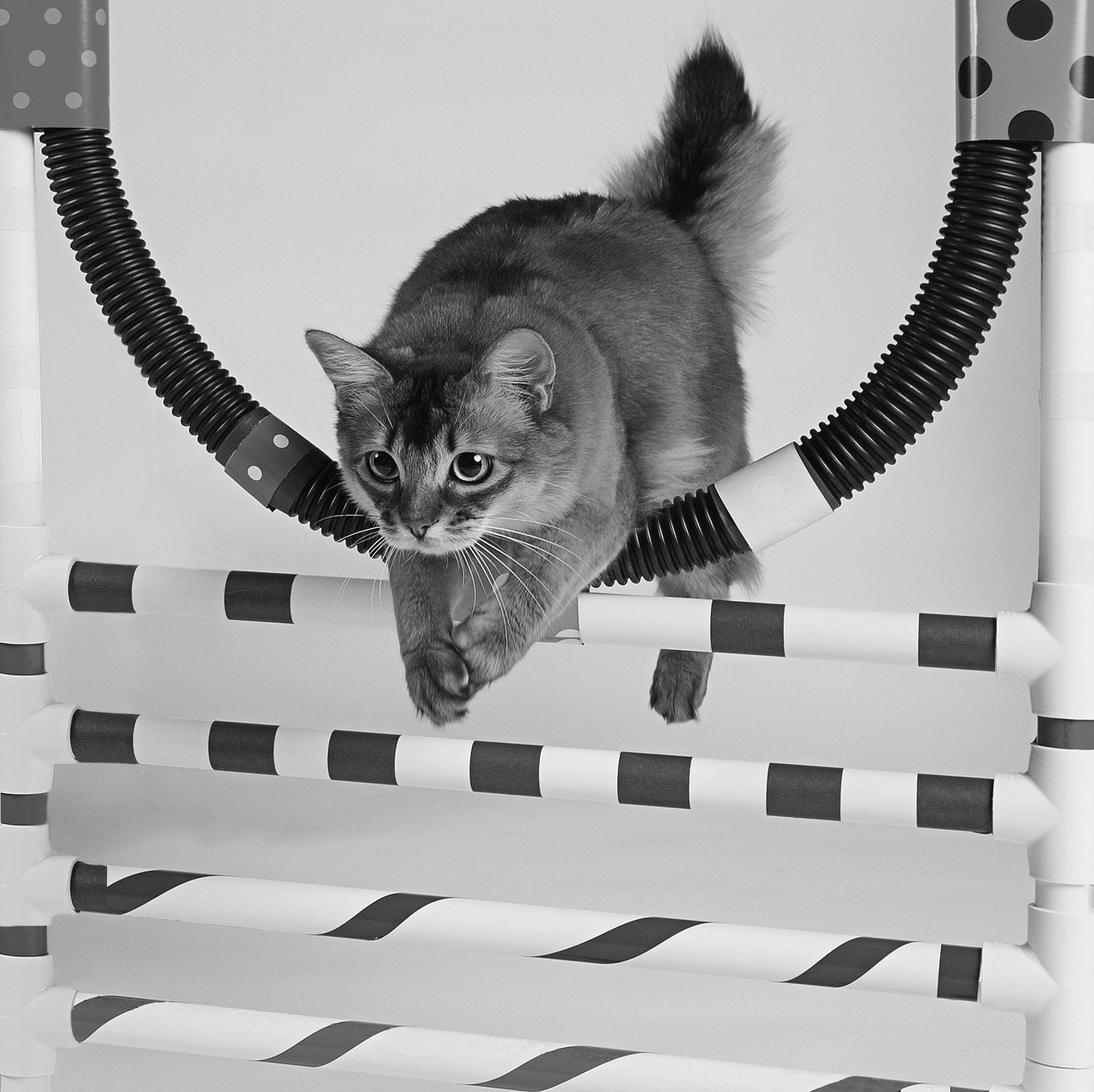
Here are some frequently asked questions about cat agility training:
Q: What breeds of cats are best suited for agility training?
A: While any breed of cat can be trained in agility, certain breeds like Abyssinians, Bengals, and Siamese cats are often more naturally agile and energetic.
Q: Can older cats participate in agility training?
A: Yes, age is not a barrier to agility training. However, it's important to consider the cat's physical health and limitations when designing the training program.
Q: How long does it take to train a cat for agility?
A: The duration of training varies depending on the individual cat. Some cats may pick up skills quickly, while others may require more time and patience. Consistency and positive reinforcement are key to success.
Q: Are there any safety concerns with agility training?
A: Safety should always be a priority. Ensure the training area is secure and free from potential hazards. Use appropriate equipment and start with low jumps before progressing to higher ones.
Q: Can I start agility training with my indoor-only cat?
A: Yes, you can train indoor-only cats for agility. However, it's important to introduce them gradually to new environments and stimuli to prevent overwhelming or scaring them.
Q: Can I participate in competitions if I am not a professional trainer?
A: Absolutely! Cat agility competitions welcome participants of all experience levels. It's a great opportunity for both you and your cat to have fun and showcase your skills together.
Remember, each cat is unique, so adjust your training approach based on their individual needs and abilities.
Answers to frequently asked questions about cat agility training

- Can any cat participate in agility training?
Yes, agility training is suitable for most cats, regardless of their age or breed. However, it's important to consider your cat's temperament and physical abilities before starting. Some cats may not enjoy the training process or may have limitations that could affect their performance.
- How long does it take to train a cat in agility?
The duration of training depends on various factors, including the cat's personality and learning ability, as well as the consistency of training sessions. Some cats may pick up agility skills quickly, while others may require more time and patience. It's best to start with basic commands and gradually introduce obstacles, allowing your cat to progress at their own pace.
- Do I need special equipment for cat agility training?
While there is specialized equipment available for cat agility training, you can also use household items creatively. For example, tunnels can be made from cardboard boxes or blankets draped over chairs. Additionally, you can use small obstacles like hula hoops or low jumps to get started. The key is to provide a safe and stimulating environment for your cat to practice their agility skills.
- What if my cat doesn't seem interested in training?
Not all cats are enthusiastic about training initially, and that's okay. It's important to make the training sessions fun and rewarding for your cat by using enticing treats or toys as incentives. Start with short sessions and gradually increase the duration as your cat becomes more engaged. If your cat still doesn't show interest, consult with a professional trainer who can offer guidance based on your cat's specific needs.
- Can indoor cats participate in agility training?
Absolutely! Agility training can be a fantastic way to provide mental stimulation and physical exercise for indoor cats. With proper conditioning and preparation of the training area, you can create an engaging space where your indoor kitty can explore their agility skills safely.
Remember that each cat is unique, and their progress may vary. Patience, consistency, and positive reinforcement are the keys to successful cat agility training. Enjoy the journey with your furry friend and celebrate their achievements along the way.
Tips for troubleshooting common training problems

When it comes to cat agility training, it's not uncommon to encounter some obstacles along the way. However, with the right approach and a little patience, you can overcome these common training problems.
One of the most common issues is fear or hesitation on the part of your cat. If your feline friend seems reluctant to participate, try breaking down the training into smaller steps and offering rewards for each successful completion.
Another challenge you may face is addressing behavioral issues during training. If your cat becomes distracted or exhibits unwanted behaviors, consider using positive reinforcement techniques such as encouraging good behavior with treats or praise.
Remember, every cat is unique and may require different strategies to overcome challenges. By observing your cat's behavior and adjusting your training methods accordingly, you can troubleshoot common problems and ensure a successful and enjoyable experience for both you and your feline companion.
Conclusion

In conclusion, cat agility training can be a fun and rewarding activity for both cats and their owners. It provides numerous benefits, such as mental stimulation, physical exercise, and improved bonding between cats and their owners. By choosing the right equipment and preparing the training area, you can create a safe and enjoyable environment for your cat. Starting with basic skills and gradually progressing to advanced techniques will help your cat become more confident and agile. Participating in cat agility competitions can further enhance your cat's skills and provide a platform for showcasing their abilities. Through positive reinforcement and building a strong bond, you can overcome common challenges in training. Overall, cat agility training offers an opportunity to enrich your cat's life while having lots of fun together.
Summary of the benefits of cat agility training

Cat agility training offers numerous benefits for both cats and their owners. Firstly, it provides mental stimulation for cats, keeping them engaged and preventing boredom. Secondly, it helps cats improve their physical fitness by promoting exercise and muscle development. Agility training also enhances a cat's coordination and balance, which can benefit them in everyday activities. Additionally, participating in agility competitions can strengthen the bond between owner and cat, as it requires trust and cooperation. Finally, cat agility training can help cats build confidence and overcome fears or behavioral issues. Overall, engaging in agility training with your cat is a fun and rewarding experience that brings many advantages to both of you.
Final thoughts and encouragement for cat owners to try agility training with their cats

Agility training can be a rewarding and enjoyable experience for both you and your cat. Not only does it provide physical exercise, but it also stimulates their mental abilities and enhances their overall well-being. By engaging in agility training, you will strengthen the bond between you and your feline friend while having fun together. Remember that patience is key during the training process, as every cat learns at their own pace. So don't be discouraged if progress seems slow at first. With dedication and positive reinforcement, you will witness your cat's confidence and agility soar to new heights. So why wait? Grab some agility equipment and start training today!




0 Comments